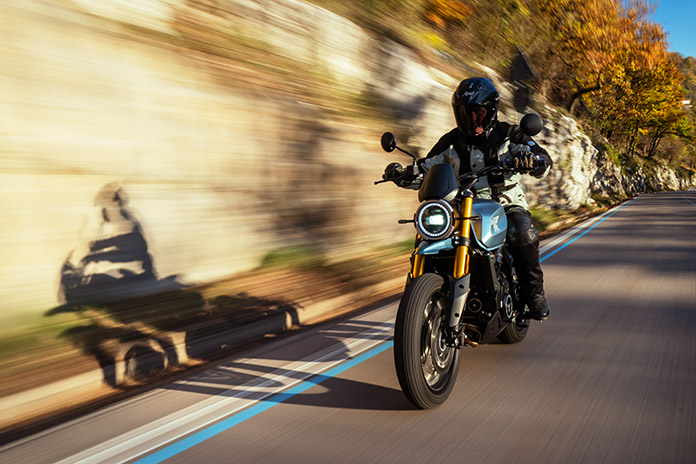
In 2022, Italian trophy brand Moto Morini made a successful start on its journey along the comeback trail after its acquisition by Chinese manufacturer Zhongneng Vehicle Group in October 2018. Its first new model to reach the marketplace under the new ownership, the parallel-Twin X-Cape 650 adventure bike, has been in production since 2021.
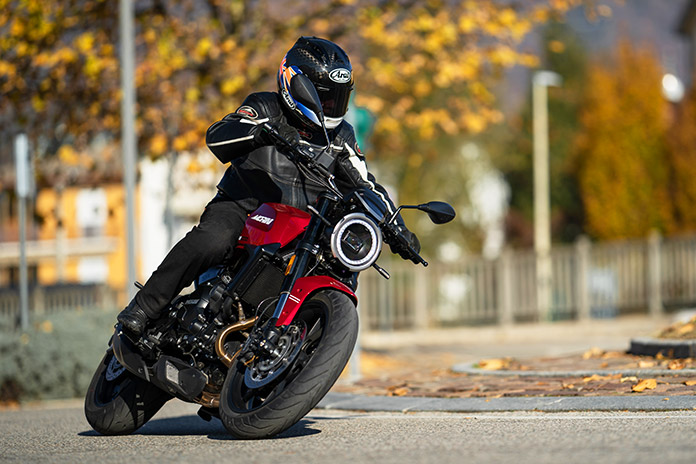
The X-Cape has been joined by two new models based on the same platform: the Seiemmezzo SCR (Scrambler) and STR (Street). Their shared Italian moniker means “6½” (engine displacement is 649cc), a passing tribute to the iconic 3½ V-Twin model that put Morini on the map in the 1970s, with 85,000 examples sold in a decade.
Related: Moto Morini: A History of Motorcycling’s Best-Kept Secret

The motorcycles are designed at the Moto Morini headquarters outside Milan in Trivolzio, Italy, and they are built at the Zhongneng factory in Taizhou, China. With MSRPs of $7,799 for the SCR and $7,499 for the STR, the Seiemmezzo duo are competitively priced. They are more expensive than the CFMOTO 650NK ($6,499), on par with the Kawasaki Z650 ($7,749), and less expensive than the Moto Guzzi V7 Stone ($9,109) and Honda CB650R ($9,399).
Like the X-Cape, these two new models are powered by the well-established liquid-cooled 649cc parallel-Twin with DOHC and 4 valves per cylinder that is produced by Zhongneng’s near-neighbor, CFMOTO (their factories are just 25 miles apart). The engine, which makes a claimed 61 hp at 8,250 rpm and 39.8 lb-ft of torque at 7,000 rpm at the crank, has an 11.3:1 compression ratio, a 180-degree crankshaft, offset chain-driven camshaft, and a single gear-driven counterbalancer. In production since 2011, the engines have proven their reliability in CFMOTO’s roster of motorcycles.
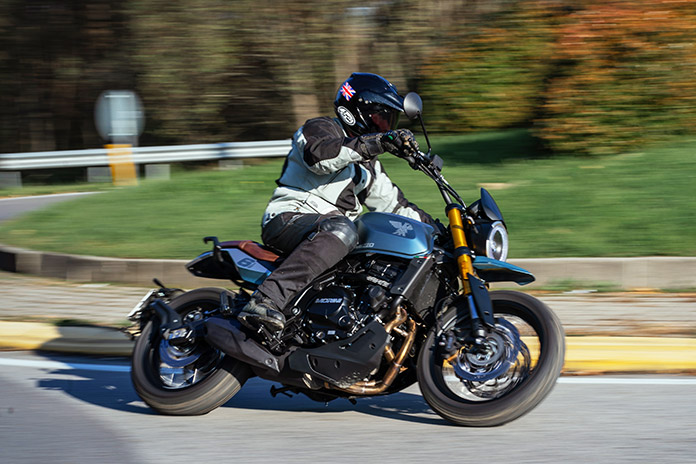
The chance to spend a sunny day riding the Seiemmezzo SCR and STR around the foothills of the Italian Alps allowed me to find out if they live up to the expectations aroused by that historic badge on the fuel tank. The engines share the same tuning, with Bosch fuel injection feeding twin 38mm throttle bodies, and both employ the same tubular steel open-cradle frame that uses the engine as a stressed member. On both bikes is a fully adjustable 43mm KYB inverted fork set at a 25-degree rake with 4.4 inches of trail and 4.4 inches of wheel travel, the same travel as the rear with a cast aluminum swingarm operating a KYB shock adjustable for spring preload and rebound damping.
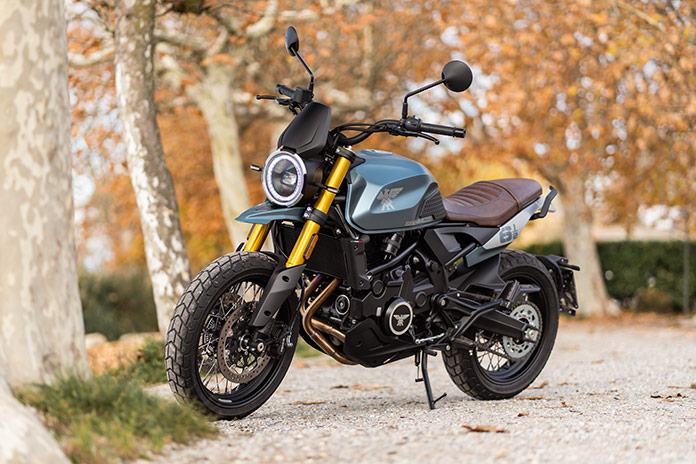
Wheelbase is the same on both bikes at 56.1 inches, and that’s because both the SCR scrambler and STR roadster carry an 18-inch front wheel rather than the 17-incher you might expect on the STR. This means the seat height on both is the same at 32 inches, thanks to them also sharing a 17-inch rear wheel. Both bikes carry Pirelli tires, but the STR is shod with Angel GT rubber, while the SCR carries more semi-knobby tubeless MT-60RS tires on wire-spoked alloy rims.
Both have the same brakes, with twin 298mm Chinese-made front discs gripped by 2-piston Brembo floating calipers and a 255mm rear disc with a 2-piston caliper. Bosch 9.1MB ABS is standard. Dry weight is claimed to be 441 lb, or probably around 480 lb ready to ride with its 4.2-gallon tank full.
Standard equipment includes LED lighting, backlit switchgear, and a comprehensive 5-inch TFT dash with two different choices of layout, Bluetooth connectivity to a smartphone, and a tire-pressure monitoring system (readings are in kPa [kilopascal] units, which is commonly used throughout the world; Moto Morini USA is working on having the TPMS system changed to psi readings for future U.S. market bikes). The noticeably high level of build quality now seems to be on a par with anything made in Japan – fit and finish are excellent, from lustrous paint to classy-looking graphics to high-quality frame welding, and all this on motorcycles that offer good value for money. The first major service comes at 25,900 miles.
Starting with the STR version, my first impression when I climbed aboard the well-padded seat is how substantial the bike seems to be – not in the sense that it’s cumbersome or bulky but simply that it has more of a presence about it than other bikes in this middleweight roadster category. The fuel tank is attractively shaped, allowing my knees to tuck into its flanks, in turn delivering a feeling of being part of the bike and inspiring confidence. Even shorter riders should be able to touch feet to the ground thanks to the seat which narrows at the stepover point.
The tapered steel handlebar is nicely placed thanks to the 1.6-inch risers cast into the upper triple clamp, resulting in a slightly leaned forward but agreeable stance that’s ideal for a roadster like this. The attractive mirrors are free from vibration and give good rearward view. The distinctive running light around the rim of the circular headlamp resembles that found on modern Mini cars, and none the worse for that.
Thumb the starter, and both versions of the Seiemmezzo fire up instantly before settling to a 1,500-rpm idle speed. There’s a quite playful note from the 2-into-1 exhaust that strangely sounds more strident at lower revs than higher up the rpm scale. The 6-speed transmission features a Japanese-developed FCC oil-bath clutch, and the gearbox shift action is perfect – crisp and precise and impossible to fault even shifting up without the clutch. Clutch action is not particularly light but it’s easy to modulate. Combined with the super controllable throttle, walking-pace U-turns are surprisingly easy on a bike with a very tight steering lock. Indeed, both Seiemmezzos are agile motorcycles, without sacrificing any stability at higher speeds.
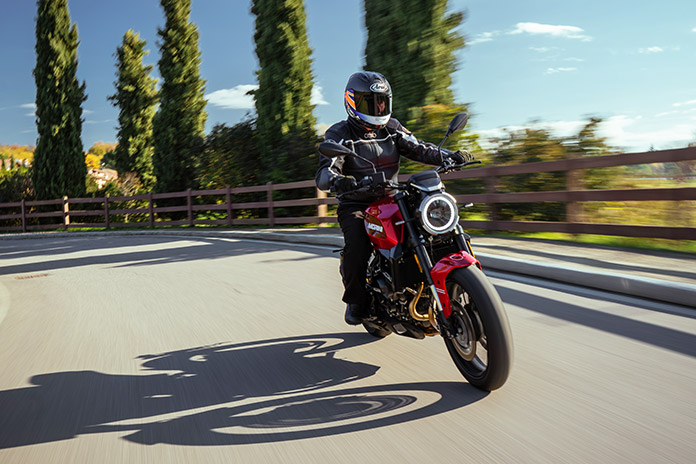
The parallel-Twin engine in both Morini models feels refined and accessible, with a linear build of power and torque from 3,000 rpm all the way to the hard-action 10,500-rpm limiter. This has been characterized by some as lacking character, as if it’s more desirable to have steps in the power delivery rather than this smooth but eager response to what your right hand is doing, but for me this is a friendly yet enticing motor that gives a pleasurable ride. It makes either Seiemmezzo pleasant and practical in high-speed use on the open road, as well as untiring to ride.
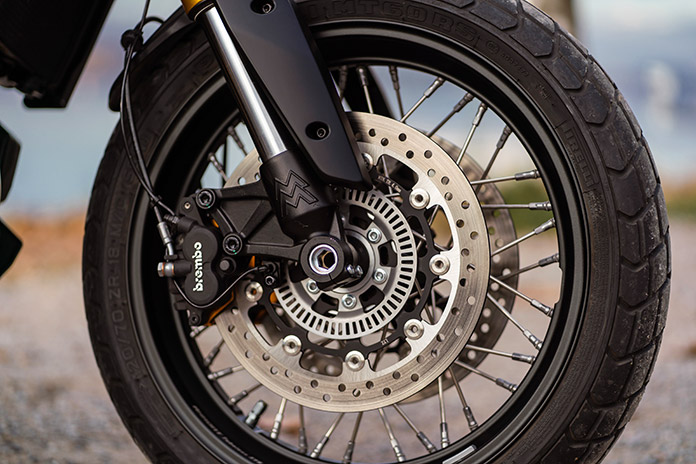
Thanks to the single gear-driven counterbalancer and the hefty weights in the ends of the handlebars, the engine is free of vibration at any revs. There are especially no tingles in the footrests or seat as you sometimes get at a constant cruising speed from comparable single-cylinder models or even some of the Seiemmezzo’s twin-cylinder rivals, although it does get mechanically noisy above 8,000 rpm. For this reason, I used that mark as my shift point and found myself in the fat part of the torque curve in each next gear. Lovely.
Also novice-friendly – but certain to be appreciated by more experienced riders – is the Seiemmezzos’ responsive but well-mapped fueling. There’s no trace of an abrupt pickup from a closed throttle, just a smooth response that adds to the sense of controllability. With torque peaking at 7,000 rpm and spread widely enough throughout the powerband, there’s no point in revving it anywhere near redline.
The Seiemmezzo STR’s Pirelli Angel GT tires warmed up quickly on a cool morning, and within less than a mile of setting off, the Morini was ready for action. The wide handlebar gives good leverage for hustling the bike through turns, and it proves to be quite agile despite the conservative steering geometry. It steers very easily from side to side in a series of 3rd-gear turns, with completely neutral handling and confidence-inspiring control.
The footpegs are mounted quite low down, which adds to the sense of spaciousness in making this a bike that taller riders will also feel comfortable on. It’s possible to scrape the hero tabs on the pegs if you really set out to do so but only by adopting a lean angle that most of Moto Morini’s target customers will be unlikely to match.
Ride quality on the STR’s standard shock settings was quite hard, making ridges in the road surface very noticeable – more so than on the softer-sprung SCR version I rode immediately after, meaning this is presumably just a question of setup. But the front brakes were immediately good despite just 2-piston Brembo calipers being used up front to reduce speeds from what is not a featherweight motorcycle. I didn’t collapse the front end when I had to panic brake to avoid some escaped cows in the road on the other side of a blind bend, and braking hard on the angle didn’t see the Seiemmezzo sit upright and head for the hedges. Instead, it just shed speed, again indicating that this is a motorcycle that’s been developed by people who ride.
Swapping over to the SCR also revealed what definitely felt like a loftier seat height despite the spec sheet claiming they’re the same. The taller, more pulled-back handlebar delivered a more upright riding stance, which paradoxically made this pseudo-off-roader a better city bike than the STR roadster to ride in traffic, allowing you to see over car roofs so as to plan a route and avoid snarl-ups. However, this and some distance covered on unsealed roads with loose gravel made me use the rear brake more than on the STR, and it started to whine and lose bite as I did so. Maybe a different choice of pads would have fixed this.
I almost got bogged down getting too ambitious during my off-road jaunt when the hard stony surface turned muddy, and I had to turn round. That’s when I discovered the limitations of the MT60RS tires, which have only a nominally chunky tread pattern. I just got away with turning around in the mud without wheel-spinning my way to Sydney, Australia. Buy an X-Cape if you want to do serious off-roading on a 650 Morini.
The SCR’s softer suspension settings were definitely comfier, without bottoming out anywhere nor affecting the grip level while cranked over on tarmac, so I’d definitely switch the STR’s rear shock setup to these if I was riding one for longer. Basically, this is a city bike that’ll be ideal for commuting, with green lane capability if desired – though I suppose you could fit a properly chunky set of Pirelli Scorpion rubber on it, and you’d be left with a respectable go-anywhere model if you didn’t like the X-Cape’s distinctive styling. Your call, but what Moto Morini has here is a trio of super well-priced models that cover just about every riding possibility.
2023 Moto Morini Seiemmezzo SCR / STR Specifications
- Base Price: $7,799 / $7,499
- Website: MotoMoriniUSA.com
- Warranty: 3 yrs., unltd. miles
- Engine Type: Liquid-cooled, transverse parallel-Twin, DOHC w/ 4 valves per cyl.
- Displacement: 649cc
- Bore x Stroke: 83.0 x 60.0mm
- Horsepower: 61 hp @ 8,250 rpm (factory claim)
- Torque: 39.8 lb-ft @ 7,000 rpm (factory claim)
- Transmission: 6-speed, cable-actuated slip/assist wet clutch
- Final Drive: Chain
- Wheelbase: 56.1 in.
- Seat Height: 32 in.
- Dry Weight: 441 lb (factory claim)
- Fuel Capacity: 4.2 gal.

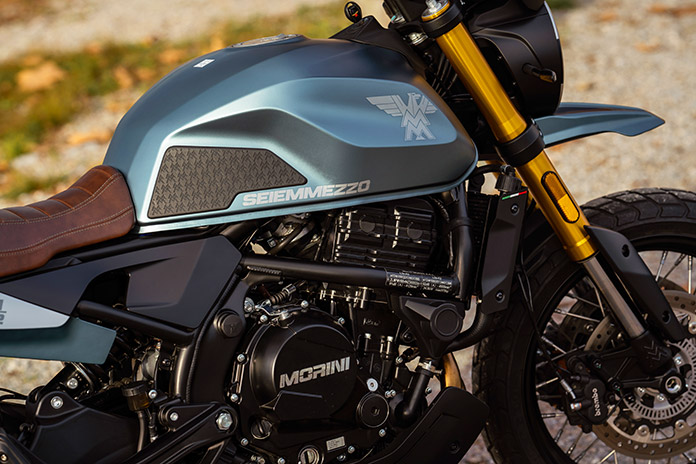
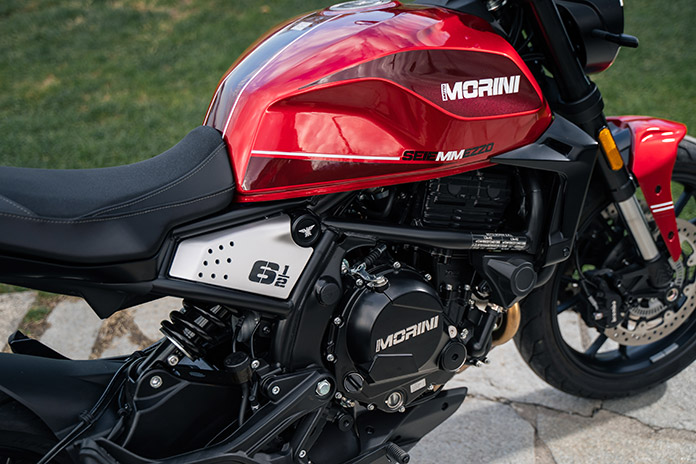
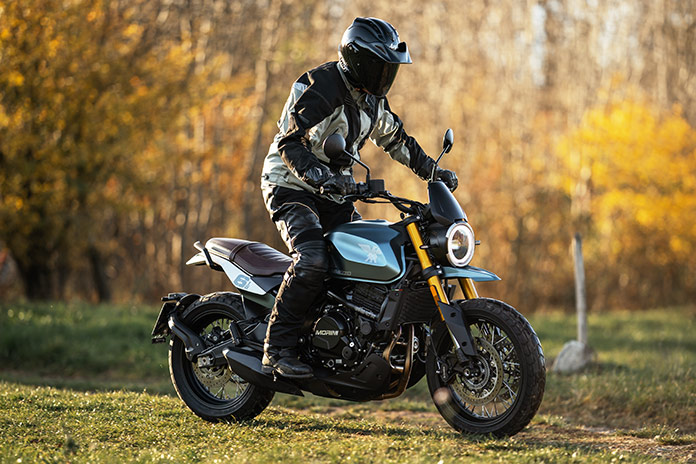
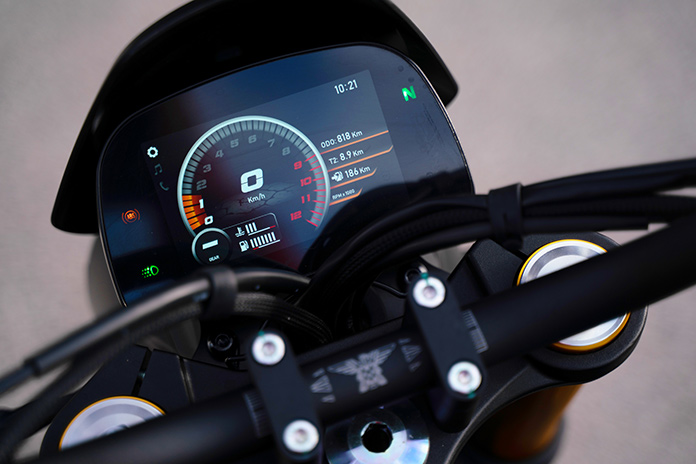
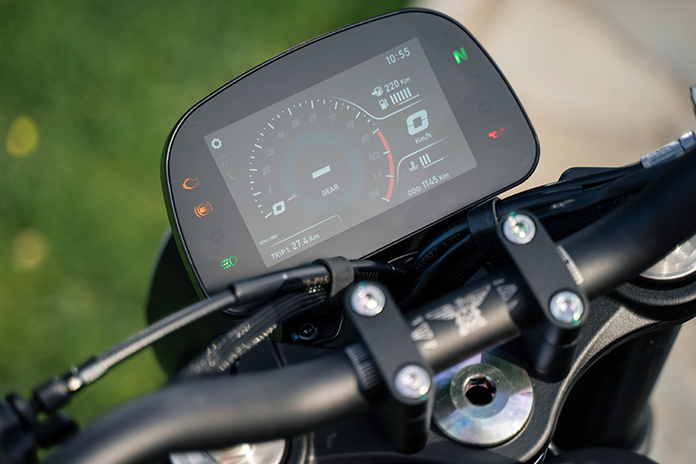
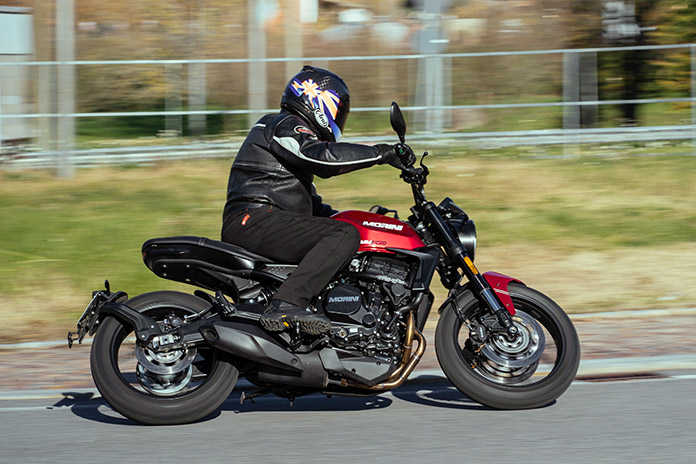
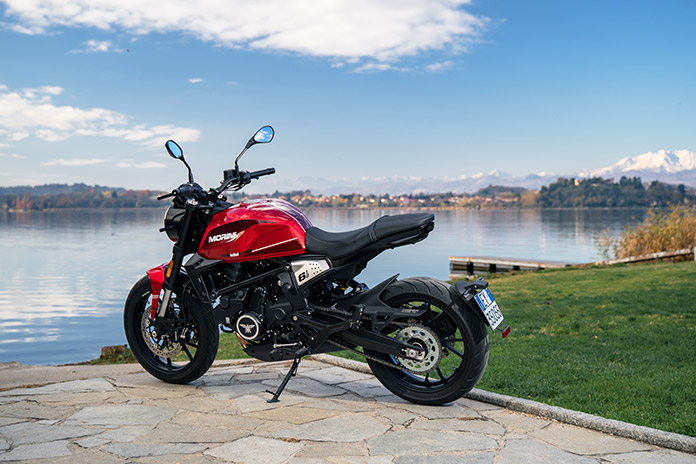
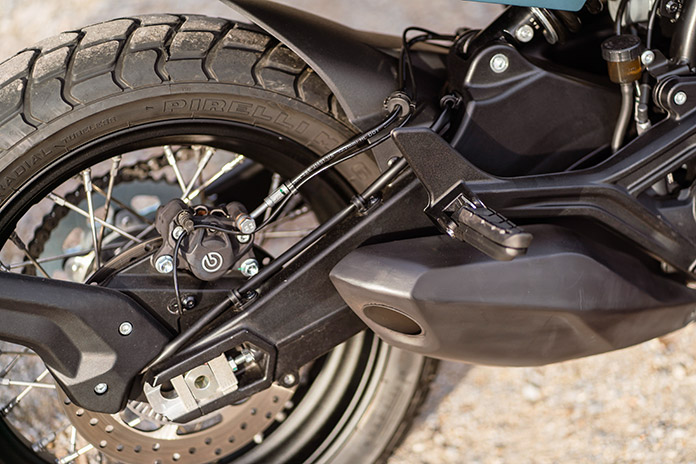
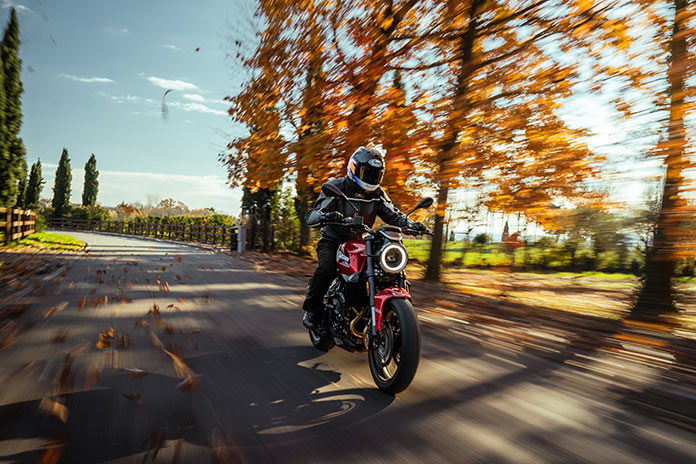

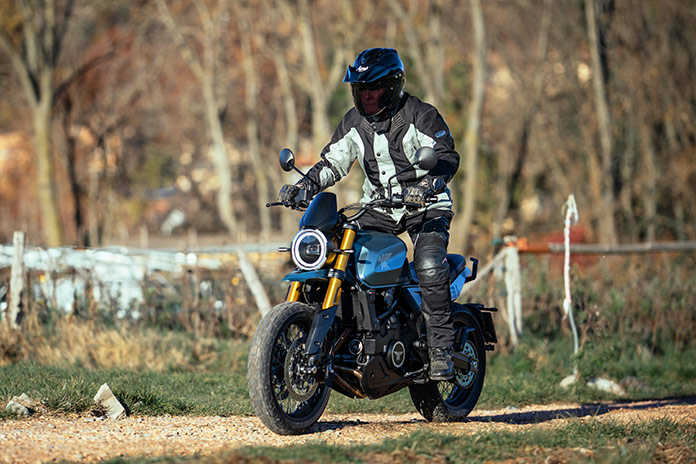
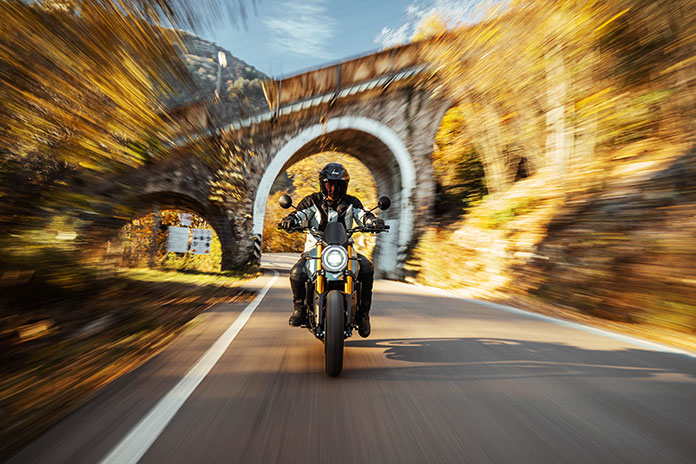
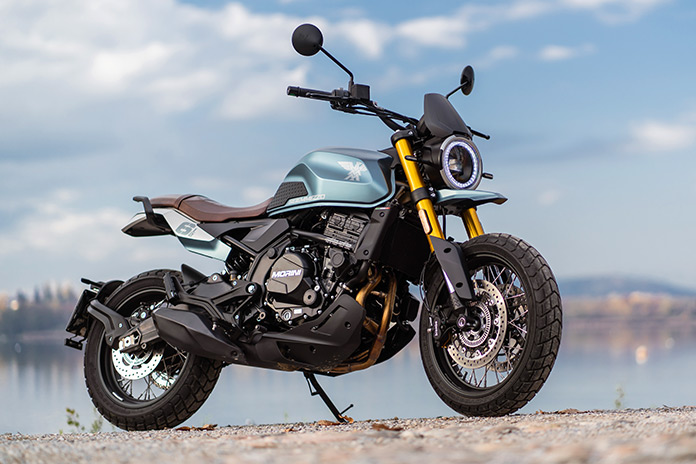
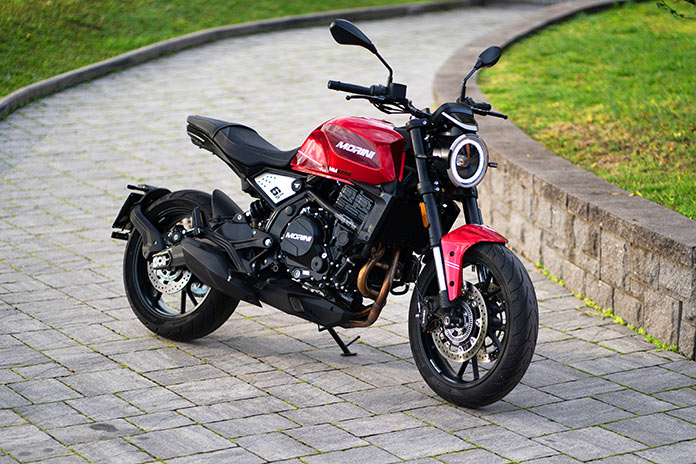

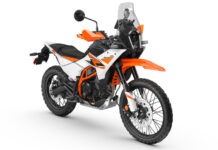
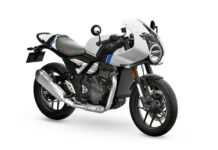
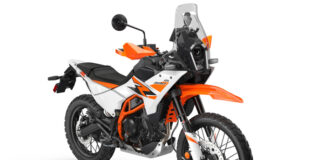
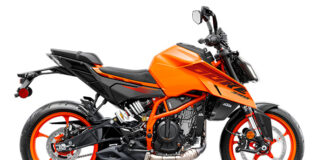


As good as these bikes sound, the problem is lack of a dealer network here in the US.